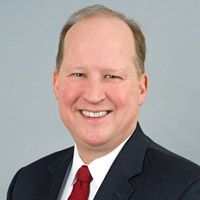An Important Choice: Public or Private School?
If you are at odds over this big decision, here's how to frame the choice, consider the consequences and come to a consensus.

Deciding whether to send your children to public or private school is a huge financial decision, but it’s also fraught with emotions, biases and deeply ingrained personal histories. There is no one right formula or answer to help people determine what’s right for them, but it’s helpful to understand what’s influencing the decision.
Especially with couples, who may have different points of view, the education conversation improves when there’s awareness about emotional triggers, clearly established priorities, the right facts and a framework for decisions.
As a financial adviser, it’s my job to help people make good choices. Here is my advice for clients wrestling with this decision.
From just $107.88 $24.99 for Kiplinger Personal Finance
Become a smarter, better informed investor. Subscribe from just $107.88 $24.99, plus get up to 4 Special Issues

Sign up for Kiplinger’s Free Newsletters
Profit and prosper with the best of expert advice on investing, taxes, retirement, personal finance and more - straight to your e-mail.
Profit and prosper with the best of expert advice - straight to your e-mail.
Understand emotions
Everyone has a personal or family history or a set of cultural values that factors into our thinking about how our children should be educated. For some, public school is an important tradition and reflects commitment to their local community and its diversity. Perhaps both parents are products of a great public-school education, or they moved to a town with high taxes to support excellent schools, and it’s an easy decision that saves a lot of money.
For others, the topic is less clear-cut. Perhaps there is a long line of family members who have attended private school, and it feels like an expectation rather than a choice. Other factors can include a struggling student, the appeal of smaller classrooms, or the desire for a religious influence in the curriculum.
The first step is to articulate how you feel about the decision, and in couples, make sure you are listening, if opinions don’t align perfectly.
Clarify priorities
When I’m working with clients, I try to help them gain clarity about their real values and priorities first, using an exercise that asks them to make trade-offs until they have their own list of priorities. Then they can negotiate a shared list as a couple. As an example, one spouse may prioritize spending time with people they love, while the other may prioritize maintaining a certain lifestyle. Through conversation, couples can discuss their priorities, identifying those they share. They can develop a list that becomes their framework to guide them as they consider the impact of big decisions.
Get the facts
The biggest mistake parents make when thinking about paying private school tuition is failing to forecast the long-term impact of using excess cash flow now instead of saving it for later. Especially when it’s an emotional decision or expectation, clients want to just close their eyes and say yes. It’s critical to quantify all expenses and make a reasonable cash flow forecast for the next several years to see how that affects finances and other goals and priorities, including funding college accounts and retirement plans.
Many couples today have deferred having kids until their mid- or late 30s and are in their 40s when children begin school. These can be peak earning years, but they are also peak saving years, and that’s sometimes lost if children attend private school. By the time children are in college, parents may face a serious retirement saving gap. An honest discussion on cash flow and savings rates over time is important, and the downstream impact should always be considered when parents ask, “Can I afford private schools?”
Establish a framework for decisions
For most clients, the analyses are eye-opening, and they are more aware of the importance of their decision. Identifying the priorities for each person and couple is extremely helpful when it’s time to make up their minds. The goal is to use the family resources for what’s important—as private schools may be—without sacrificing the overarching priorities for quality of life and financial security, among others.
One way to balance these goals is to get creative with making trade-offs so that the decision has more than one black or white variation. As example, to achieve their goals for private education, are they willing to trade:
- K-12 private education for a four-year program instead?
- The assumption that all kids will be treated the same for a more individual decision?
- Some independence in return for asking grandparents to chip in?
- Having one spouse stay at home versus returning to work?
- Cutting other expenses to free up cash flow?
- Pushing planned retirement from 63 to 67?
Find the right answer for you
Going through the process will often lead to a clear decision on forging ahead with a private school education or not, because parents are making an informed decision having weighed all the aspects that they can articulate to family and friends.
Ultimately, knowing your priorities and having conversations that deal with emotional and factual truths result in making choices with clarity, confidence and control—living the life that’s right for you.
Profit and prosper with the best of Kiplinger's advice on investing, taxes, retirement, personal finance and much more. Delivered daily. Enter your email in the box and click Sign Me Up.

John Bratschi is CEO of Prio Wealth, a $2.7 billion registered investment advisory firm in Boston that helps clients prioritize their financial and life goals. With over 33 years' experience in the financial services industry, John works to integrate each client's individual priorities with their plans and portfolios and gives them a framework to make better choices every day.
-
 Fed's Rate Cuts Could Have Impacts You Might Not Anticipate
Fed's Rate Cuts Could Have Impacts You Might Not AnticipateUnderstanding how lower interest rates could impact your wallet can help you determine the right financial moves to make.
-
 Past Performance Is Not Indicative of Your Adviser's Expertise
Past Performance Is Not Indicative of Your Adviser's ExpertiseMany people find a financial adviser by searching online or asking for referrals from friends or family. This can actually end up costing you big-time.
-
 I'm want to give my 3 grandkids $5K each for Christmas.
I'm want to give my 3 grandkids $5K each for Christmas.You're comfortably retired and want to give your grandkids a big Christmas check, but their parents are worried they might spend it all. We ask the pros for help.
-
 I'm a Financial Adviser: The Fed's Rate Cuts Could Have Impacts You Might Not Anticipate
I'm a Financial Adviser: The Fed's Rate Cuts Could Have Impacts You Might Not AnticipateUnderstanding how lower interest rates could impact your wallet can help you determine the right financial moves to make.
-
 Past Performance Is Not Indicative of Your Financial Adviser's Expertise
Past Performance Is Not Indicative of Your Financial Adviser's ExpertiseMany people find a financial adviser by searching online or asking for referrals from friends or family. This can actually end up costing you big-time.
-
 I'm a Financial Planner: If You're Not Doing Roth Conversions, You Need to Read This
I'm a Financial Planner: If You're Not Doing Roth Conversions, You Need to Read ThisRoth conversions and other Roth strategies can be complex, but don't dismiss these tax planning tools outright. They could really work for you and your heirs.
-
 Could Traditional Retirement Expectations Be Killing Us? A Retirement Psychologist Makes the Case
Could Traditional Retirement Expectations Be Killing Us? A Retirement Psychologist Makes the CaseA retirement psychologist makes the case: A fulfilling retirement begins with a blueprint for living, rather than simply the accumulation of a large nest egg.
-
 I'm a Financial Adviser: This Is How You Can Adapt to Social Security Uncertainty
I'm a Financial Adviser: This Is How You Can Adapt to Social Security UncertaintyRather than letting the unknowns make you anxious, focus on building a flexible income strategy that can adapt to possible future Social Security changes.
-
 I'm a Financial Planner for Millionaires: Here's How to Give Your Kids Cash Gifts Without Triggering IRS Paperwork
I'm a Financial Planner for Millionaires: Here's How to Give Your Kids Cash Gifts Without Triggering IRS PaperworkMost people can gift large sums without paying tax or filing a return, especially by structuring gifts across two tax years or splitting gifts with a spouse.
-
 'Boomer Candy' Investments Might Seem Sweet, But They Can Have a Sour Aftertaste
'Boomer Candy' Investments Might Seem Sweet, But They Can Have a Sour AftertasteProducts such as index annuities, structured notes and buffered ETFs might seem appealing, but sometimes they can rob you of flexibility and trap your capital.
-
 Quick Question: Are You Planning for a 20-Year Retirement or a 30-Year Retirement?
Quick Question: Are You Planning for a 20-Year Retirement or a 30-Year Retirement?You probably should be planning for a much longer retirement than you are. To avoid running out of retirement savings, you really need to make a plan.